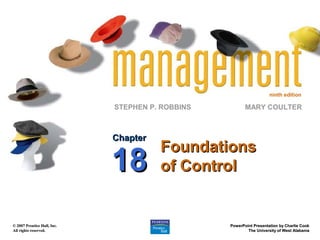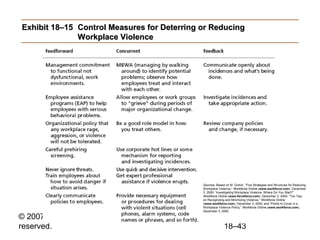This document provides an outline for a chapter on organizational control. It discusses key topics like the definition of control, the control process, measuring performance, and tools for controlling organizational performance. Specifically, it defines control as monitoring activities to ensure they are accomplished as planned and correcting deviations. It describes the three steps in the control process as measuring performance, comparing it to a standard, and taking action to correct deviations. The document also discusses common performance measures, different types of controls like feedback and concurrent controls, and tools managers can use to control performance like balanced scorecards and benchmarking.















































